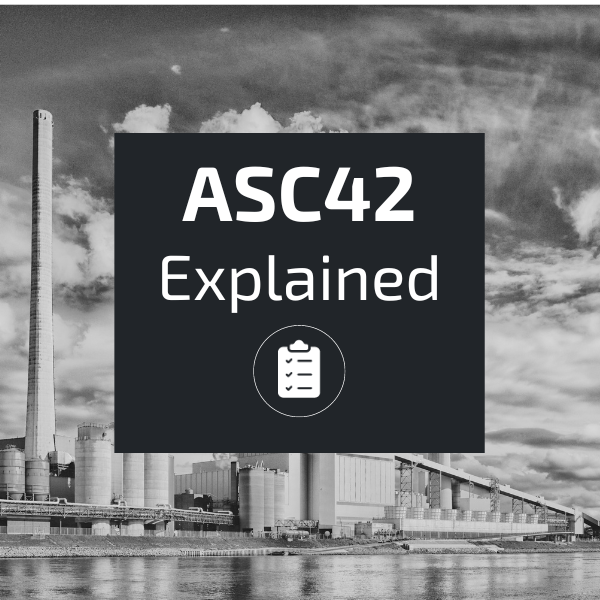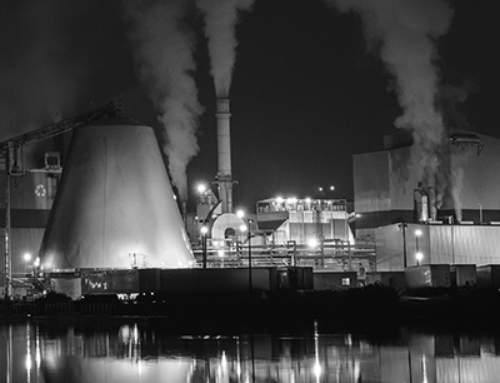2022 brings important changes to accounting guidelines for leases. Here is what you need to know to keep energy projects off balance sheet in 2022 and beyond.
Sustainable solutions have to make environmental and economic sense. This underlines the importance for your decarbonization strategy to agree with your financial goals and risk tolerance.
At the start of 2022, the Accounting Standards Codification (ASC) Topic 842 took effect, which impacts the accounting requirements for leases. Whether it be a capital or operational lease, liabilities must be accounted for on the business balance sheet.
If you want to keep your balance sheet clear of debt, it’s critical that you structure energy improvement projects as a service agreement.
Too often there are lease or lease-like obligations masquerading as a service agreement. If your accounting department or an outside auditor recognizes your established ‘service agreement’ as a lease, then it’s already too late to change the contract terms and you’ll find yourself unwillingly adding liabilities to your business’s balance sheet.
Before signing into a contract, it’s important to review these significant factors to assure your arrangement truly is a service agreement:
- asset ownership
- payment structure
- equipment uniqueness
Asset Ownership — Who is in control of and responsible for the equipment?
If your plant is largely in control of the financed equipment, then ASC 842 defines that arrangement as a lease. Whether packaged as an operational or capital lease, the equipment will still have to appear on your balance sheet.
To avoid that, your plant must forego control of the equipment to the third-party energy partner, which will own, manage, and operate the system. Your plant can have access to a bypass or emergency shut-off switch, yet functional control or other nuanced equipment management is left to the third party equipment owner if it’s to be structured as a service agreement.
Responsibility for assessed taxes and insurance costs also adds weight towards determining asset ownership. For it to be a service agreement, the energy partner should be responsible for baring the risk of payment of any property tax assessed by the county on the equipment as well as take ownership over insurance costs to cover any casualty loss on the equipment.
If your plant is responsible for these costs, or if the contract has a reimbursement clause that details how you will pay the energy partner back for any costs they incur from tax or insurance payments, then that lends to the argument that the arrangement is a lease.
Payment Structure — Is there a minimum monthly payment or only unit-based pricing?
For it to be a service agreement, all operating risk should be absorbed by the third party energy partner. This means that the agreement does not include any minimum monthly payment. Instead, the energy partner owns and operates the equipment which is placed in your facility to serve you.
Your plant only pays on a per unit basis when the equipment delivers value (such as through effective heat recovery to save therms). With risk shifted to the energy partner, your plant has no obligation to pay for non-performing equipment. This helps establish a service agreement.
On the other hand, a financial agreement that requires a minimum monthly payment — regardless of equipment effectiveness — will be seen as a lease.
Equipment Uniqueness — is the equipment designed specifically for your plant?
Equipment uniqueness may not be specifically detailed in the terms of the agreement, yet it can often be inferred from the raw nature and interconnectedness of the installed equipment within your plant. When equipment is unit-contingent, meaning that the service is dependent on that particular unit, then it aligns with a service agreement.
In contrast, if the equipment could feasibly be swapped out for a different piece — such as a blue car being exchanged for a black car to perform the same function — then the equipment itself may not have the specificity to allow for a service agreement, and it will rather be regarded as a lease.
Keeping energy efficiency projects off-balance sheet has its advantages, yet it’s not essential for all businesses. If your business wants to have control over all equipment within your plant and feels that low-cost debt is justifiable to leverage the expensive equity to realize business growth, then a lease may be the path for you.
If your business is keen on maintaining a debt-free balance sheet, then you must be aware of the changes implemented by ASC 842. When reviewing contracts, it’s particularly important to note asset ownership, payment structure, and equipment uniqueness to execute a deal as a service agreement. Any one of these factors may not outweigh the other two, making these agreements difficult to asses.
Due to the complex nature of these agreements and the detail-oriented accounting guidelines, it’s recommended to include your accounting department and relevant third parties — such as a business lawyer and outside auditor — in the decision making process to assure that the contract is well structured to meet your business needs.





